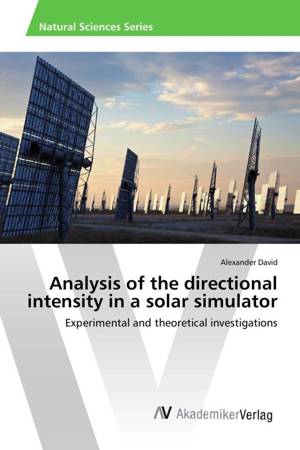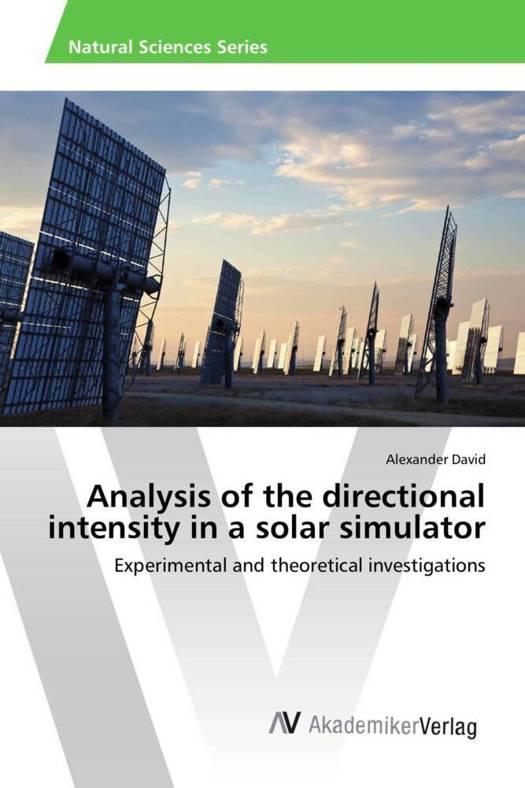
- Afhalen na 1 uur in een winkel met voorraad
- Gratis thuislevering in België vanaf € 30
- Ruim aanbod met 7 miljoen producten
- Afhalen na 1 uur in een winkel met voorraad
- Gratis thuislevering in België vanaf € 30
- Ruim aanbod met 7 miljoen producten
Zoeken
Analysis of the directional intensity in a solar simulator
Experimental and theoretical investigations
Alexander David
Paperback | Engels
€ 45,45
+ 90 punten
Omschrijving
High-flux solar simulators are becoming standard tools for characterizing thermo-physical and -chemical properties of solar components and materials under high radiative flux and/or high temperature conditions. The main radiation diagnostics in this context are focused on spectrum determination and irradiance measurements in order to determine flux density distributions and the total power incident on a sample. However, this information is not sufficient to fully understand the phenomena associated with radiative heat transfer in structures where light propagation is an important factor, for example volumetric and particle solar receivers. A novel pin-hole method for measuring the directional intensity of solar simulators is therefore presented in this study. The feasibility of the concept is discussed for a single-lamp 7 kWe-solar simulator.
Specificaties
Betrokkenen
- Auteur(s):
- Uitgeverij:
Inhoud
- Aantal bladzijden:
- 228
- Taal:
- Engels
Eigenschappen
- Productcode (EAN):
- 9783639886863
- Uitvoering:
- Paperback
- Afmetingen:
- 150 mm x 220 mm
- Gewicht:
- 319 g

Alleen bij Standaard Boekhandel
+ 90 punten op je klantenkaart van Standaard Boekhandel
Beoordelingen
We publiceren alleen reviews die voldoen aan de voorwaarden voor reviews. Bekijk onze voorwaarden voor reviews.








